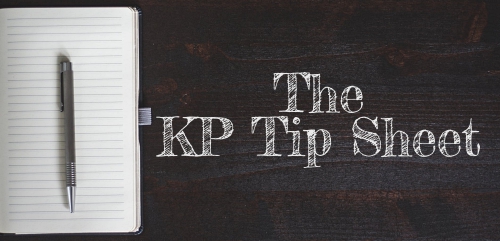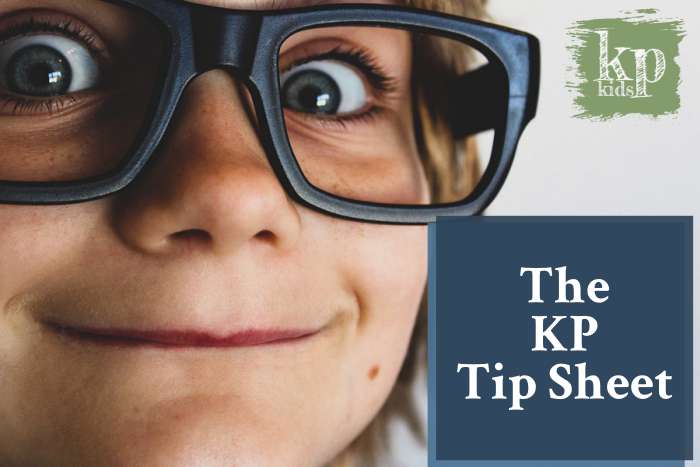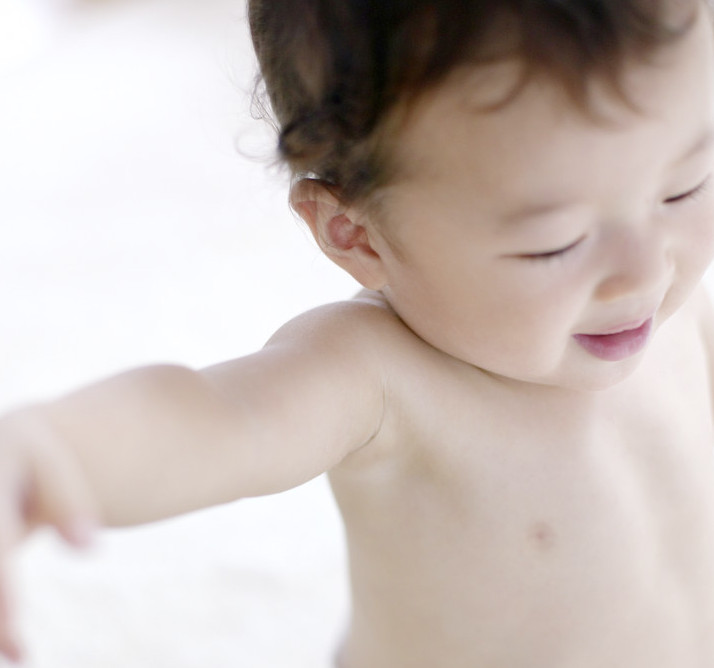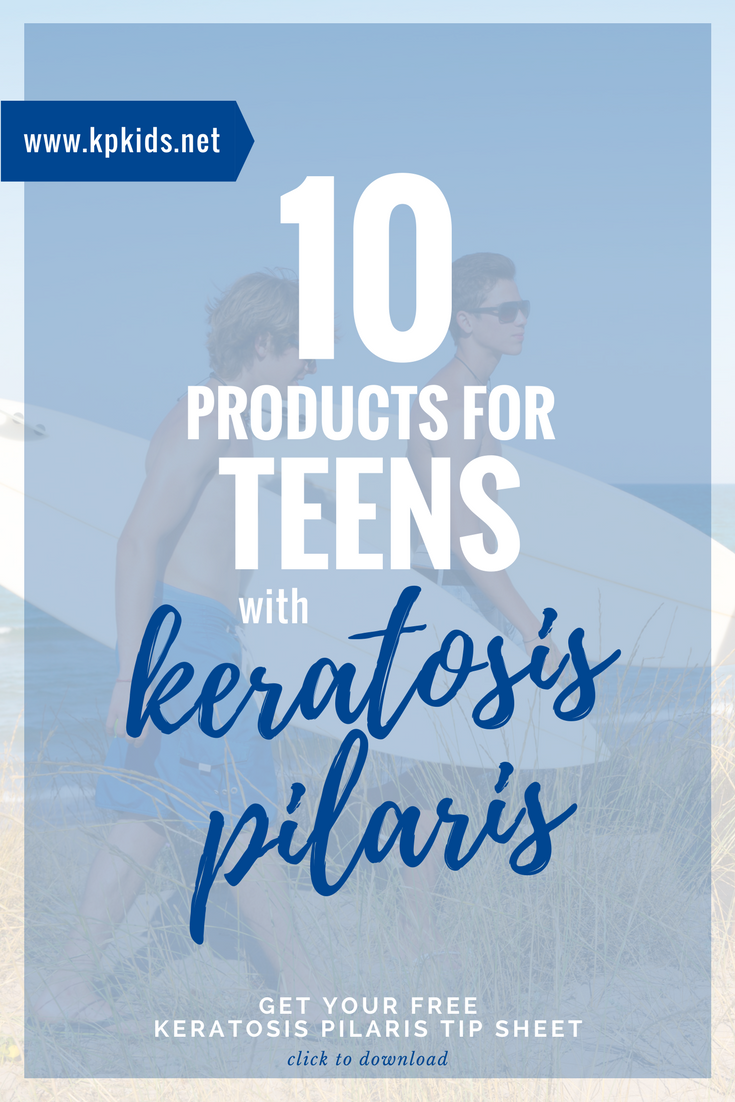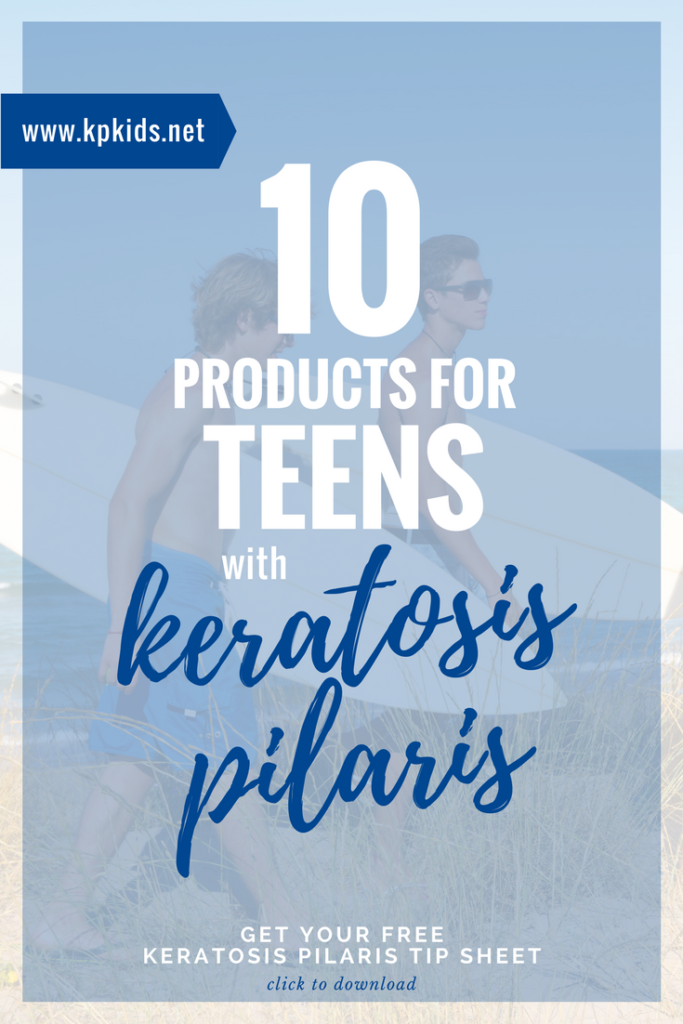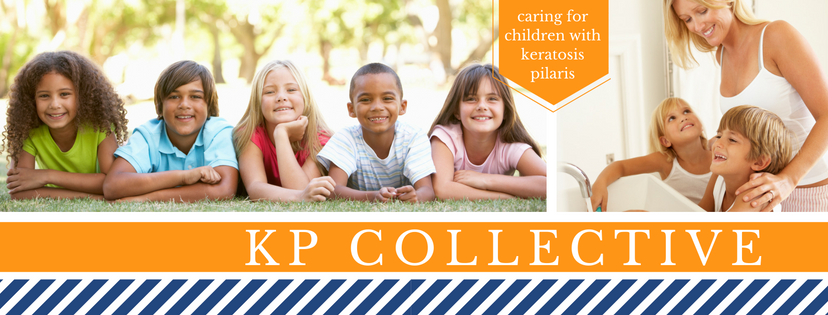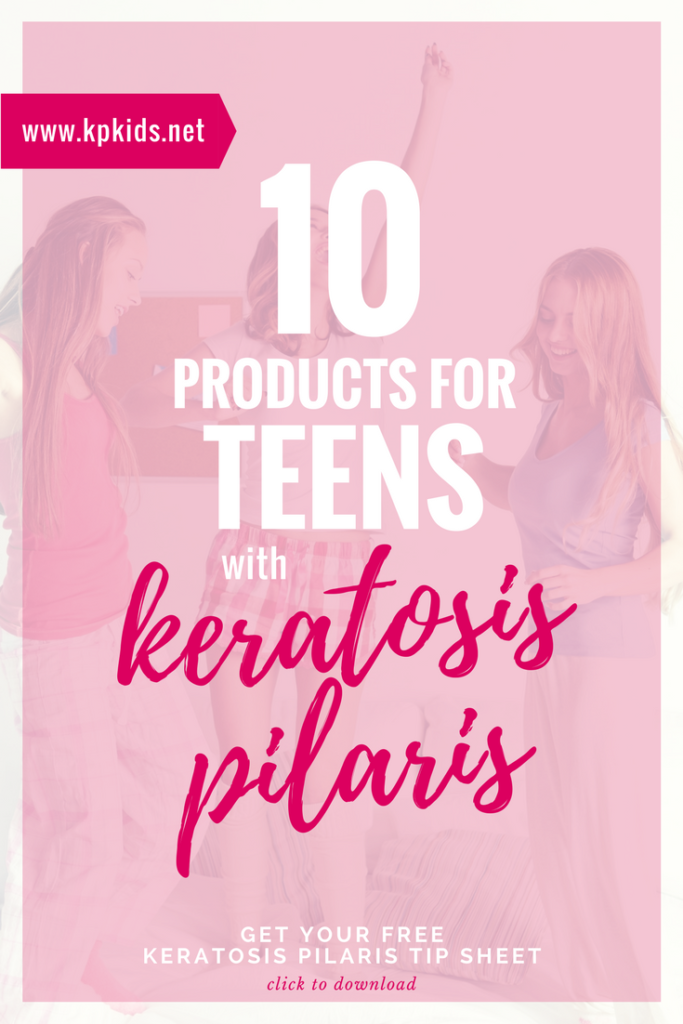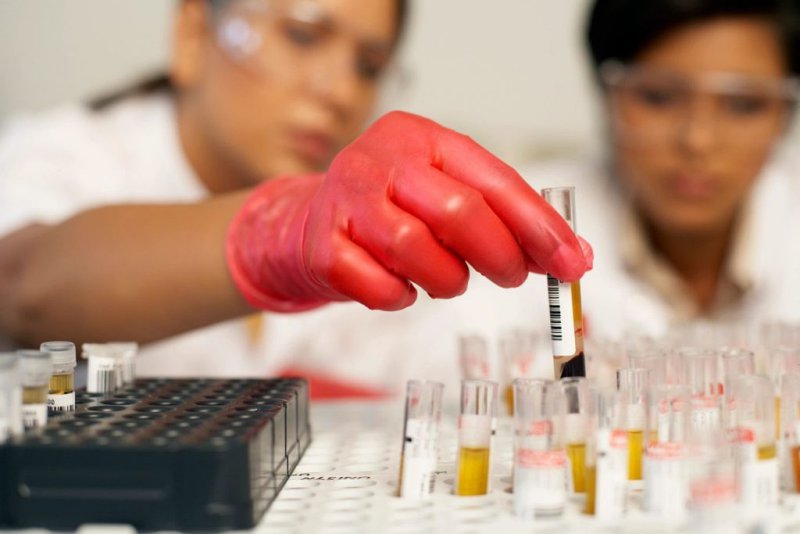kpkids
Keratosis Pilaris Treatment kpkids Approved Products
Products for Sensitive Skin & Keratosis Pilaris Treatment (that Actually Work)
Jump to:
If you or your kids have Keratosis Pilaris, then you know exactly how hard it can be to find something that helps ease the symptoms. Keratosis Pilaris causes haven’t really figured out yet, and we know KP can’t be cured. The good news is it can be controlled with the right Keratosis Pilaris treatment.
If you’re looking for a list of products that can be used to treat KP, then you’ve come to the right place. The following is a list of all the things you might need to combat Keratosis Pilaris in your family. As you’re well aware I’m sure, treating KP is a trial and error process. Each product listed below was chosen because it has actually helped folks just like you treat their Keratosis Pilaris, but we are all unique individuals and not every treatment works for every person so you may have to be a little patient. If what you’ve chosen doesn’t seem to be working, try the next thing. We know you can find the right treatment routine. We are here to help.
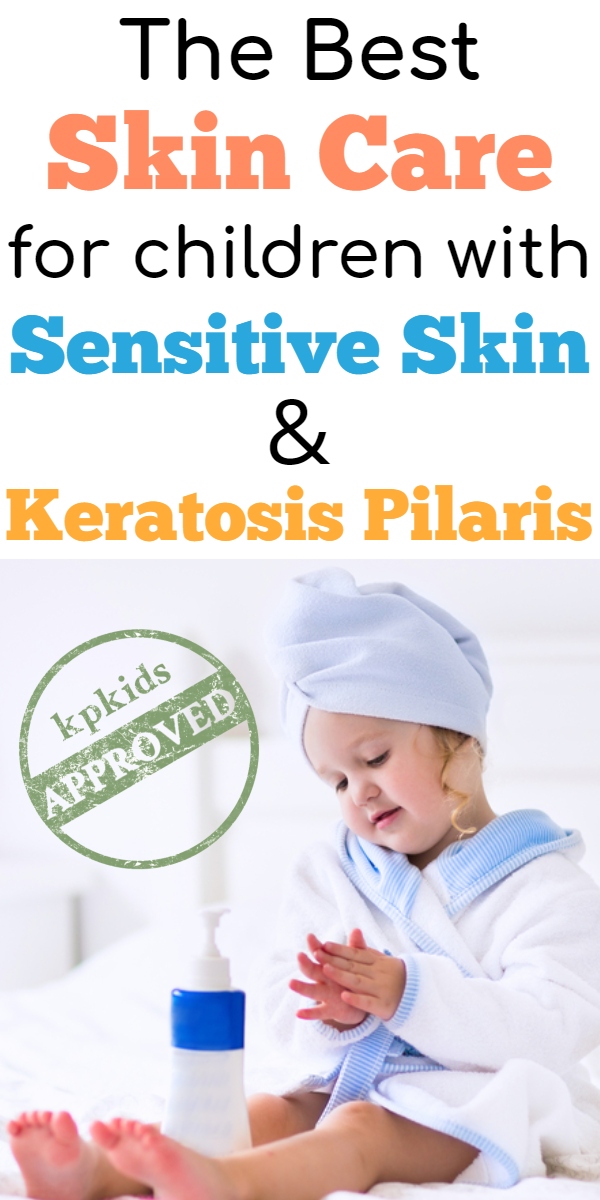
This post may contain affiliate links. For more information, visit our disclosure page.
Keratosis Pilaris Creams, Moisturizers, and Lotions
Finding the right moisturizer to treat Keratosis Pilaris is where you are probably going to spend most of your time and effort. There are so many options. Here is our list of kpkids approved moisturizers to treat Keratosis Pilaris skin.


CeraVe Renewing SA Lotion
All CeraVe products are developed with Dermatologists to create medical grade products that provide solutions for dry, irritated, or sensitive skin. This National Eczema Association certified lotion has salicylic and lactic acids that work to soften the hard keratin protein buildup on the surface of the skin and helps get rid of it leaving skin smooth. The is great if your main struggle is keratosis pilaris on legs. The lotion also contains three of the essential ceramides (1, 3, and 6-II)–I know that sounds a little intense, but ceramides are healthy fatty acids that are the major component of the protective layer of our bodies cells. So this CeraVe lotion not only helps remove the excess keratin but it also supplies extra protection for the cells of your skin. CeraVe Rough and Bumpy is great at locking in moisture to keep working for hours after you apply it. On top of all those benefits, this moisturizer is hypoallergenic and fragrance-free, making it perfect for treating Keratosis Pilaris.
PRO TIP: We would recommend using this for children ages 3+. To treat Keratosis Pilaris in babies we recommend starting coconut oil first.


AmLactin Daily
Here’s another hypoallergenic and fragrance-free keratosis pilaris lotion. AmLactin uses alpha-hydroxyl acid (AHA) to powerfully exfoliate and soften the rough skin associated with Keratosis Pilaris. This guy does a great job of keeping your skin hydrated because it’s packed with emollients that lock in moisture for hours. AmLactin Daily is great to use as a routine moisturizer applying in the morning and evening. AmLactin is recommended for ages 3+.
PRO TIP: As with any AHA product, AmLactin is not recommended for facial use. (Use this or this instead on extra sensitive skin) Using an acidic product can cause some stinging and irritation on sensitive or broken skin so use caution and discontinue use if you experience this and switch to a different moisturizer. Also, AHA can increase your sensitivity to sunlight so be sure to use adequate protection (you should be doing that anyway).
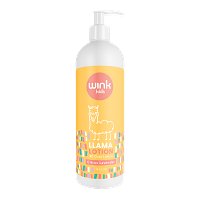
Llama Lotion
Wink Naturals is a great little company that is putting out a lot of great products that you can feel good about using for your family. Their Llama Lotion is no exception. It’s super gentle and safe to use for treating Keratosis Pilaris in babies and toddlers. This moisturizer is made of all-natural ingredients like coconut oil and essential oils. This makes a great daily and even multiple-times-a-day lotion that will help keep your skin healthy. Wink regularly run specials and discounts on their products and they offer nice savings if you signup for a subscription (I recommend signing up for the subscription either way; you get the discount and you can cancel your subscription before it renews–no questions asked). But if you prefer, you can get a lot of their products, including the llama lotion, on Amazon.
PRO TIP: This lotion is great for maintenance if your KP symptoms are under control or if you batting keratosis pilaris on your face, but if you are struggling with significant redness, bumpiness, or irritation you may want to look at using one of these healing ointments or a stronger moisturizer first to calm things down.


KP Away
KP Away is different than most traditional Keratosis Pilaris treatment products on the market today. This Dermatologist developed cream doesn’t use acid based exfoliation but instead focuses on maximizing hydration and moisture retention in the skin. This cream has only 7 ingredients and is completely free of harsh and irritating substances. It’s even the only product we’ve found specifically designed to treat Keratosis Pilaris that is safe for infants. Parents in our Facebook group have tried and loved KP Away too so we think it’s worth a shot especially if you want to avoid AHAs. KP Away is available on Amazon or directly from their website.
PRO TIP: This one comes with a relatively hefty price tag, but it is a large jar (16oz) and the company claims it will last 6-8 months even with liberal use.


KP Duty Moisturizing Lotion
DERMAdoctor is a popular skincare brand and their products designed specifically for Keratosis Pilaris have helped a lot of folks just like yourself. Their hydrating moisturizer boasts a study showing how their KP Duty moisturizing lotion doubled participants skin moisture levels after 6 weeks of use. However, it was a small study and their website does not provide a ton of details on the study–so take that with a grain of salt. This lotion is another AHA product that helps treat Keratosis Pilaris by softening and exfoliating the excess keratin. The KP Duty line has several products you can use to fight KP including an exfoliating scrub.
PRO TIP: As with any AHA product, KP Duty is not recommended for facial use. (Use this or this instead on extra sensitive skin) Using an acidic product can cause some stinging and irritation on sensitive or broken skin so use caution and discontinue use if you experience this and switch to a different moisturizer. Also, AHA can increase your sensitivity to sunlight so be sure to use adequate protection (you should be doing that anyway).


Eucerin Intensive Repair
Eucerin is another big name in medically-minded skin care. This is their take on a moisturizing and exfoliating AHA lotion. The Intensive Repair formula brings some powerful treatment for Keratosis Pilaris. This lotion has a thick, rich feel and is fragrance-free to mitigate irritation.
PRO TIP: As with any AHA product, Eucerin is not recommended for facial use. (Use this or this instead on extra sensitive skin) Using an acidic product can cause some stinging and irritation on sensitive or broken skin so use caution and discontinue use if you experience this and switch to a different moisturizer. Also, AHA can increase your sensitivity to sunlight so be sure to use adequate protection (you should be doing that anyway).


Coconut Oil
Keratosis Pilaris coconut oil treatment is becoming a huge trend and it is perhaps the best natural treatment for KP. Coconut oil is one of the most gentle and natural products you can use for your skin. It’s safe for anyone at any age (as long as you don’t have an allergy specific to coconuts–which is rare). You can find it almost anywhere and it can be used in a ton of different ways. We recommend using it right out of the jar as a moisturizer, or you can use it to make your own exfoliating scrub. You can also mix it with cocoa butter to make a moisturizer with a more traditional texture. Another huge plus is that using coconut oil to treat KP is probably the most cost-effective method out there. One big jar will stay good in your cabinet longer than it will take you to use it up. Keratosis Pilaris natural treatments can be hard to find, but this will not disappoint.
PRO TIP: There are a LOT of options out there when it comes to coconut oil and you want to get the right stuff. We’ll give you the full rundown soon in another post, but for now, we’ll keep it simple. Look for a product that is organic, unrefined, and either virgin or extra virgin (for coconut oil the two terms mean the exact same thing).
Healing ointments for Keratosis Pilaris
Keratosis Pilaris arms and legs can make it hard to not be self-conscious especially if you’re dealing with severe symptoms. A healing ointment could be the best solution for you to relieve the inflammation that can accompany KP. These help ease the redness, irritation, and possible itchiness that often plagues us. They are also great for all of the other skin irritations (think diaper rash, chapped skin, or even dry, cracked hands) we experience.


Era Organics Super Balm
This healing balm is completely organic and natural, and it is safe for infants. You can apply this to any irritated or broken skin to provide relief and start the healing process. Era has packed this balm with tons of healthy oils. This product is great for Keratosis Pilaris that is out of control or really bothersome to your little guy or gal.
PRO TIP: As with most of these ointments, a little goes a long way. Try to only apply it to the most irritated areas to make it last.


Mustela Stelatopia Emollient Balm
Here’s another healing ointment that is perfect of babies or even the young at heart that are struggling with Keratosis Pilaris, eczema, or dry skin. This plant-based emollient has a thick and creamy texture and provides ultimate hydration for relieving all the itching, burning, or roughness associated with common skin conditions. Stelatopia balm is 100% free of parabens, phthalates, phenoxyethanols, steroids, and fragrances.


Aquaphor Baby Healing Ointment
Many parents are acquainted with Aquaphor. It’s probably the most recommended brand for skin care for babies by pediatricians. The ointment is great for diaper rash, drool rash, or other minor skin irritations. It’s hypoallergenic and safe formula coupled with it’s healing promoting skin protection make it perfect for times with Keratosis Pilaris is really angry.
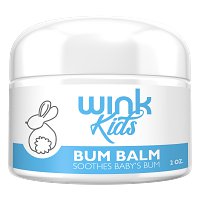
Bum Balm
Wink Naturals Bum Balm is another big win for them. This is the only diaper rash cream we use, but we’ve also found it useful for the really irritated bumps that pop up with our kid’s KP. Bum Balm is super thick and a little bit messy, but once it gets it in place it will stay put and keep on protecting the skin underneath. Just like the Llama Lotion, you can save a little bit by signing up for a subscription on the Wink site, or you can simply buy it on Amazon.
Soaps and Body Washes for Keratosis Pilaris
If you remember from the KP Crash Course, bathing is a crucial part of treating Keratosis Pilaris, but finding a soap to use that isn’t going to make the irritation and dryness worse can be a challenge. These soaps and body washes are gentle and safe to use on even the most sensitive skin. Whichever you choose, remember to not go too crazy…a little goes a long way.


Shea Moisture African Black Soap
African Black Soap has been used to treat eczema and psoriasis for years, but recently it has become a popular soap for Keratosis Pilaris too. In fact, it is one of the most mentioned products in our Facebook group. The shea butter helps to cleanse and calm irritated skin without drying it out. And if you prefer, there is also a liquid body wash version too.
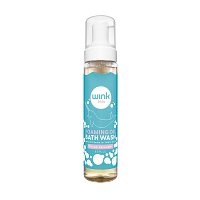
Wink Naturals Foaming Oil Bath Wash
Norwhal soap (as its affectionally known in our house) is a great way to clean up at bath time. It is an all-natural product that is gentle and doesn’t dry out your skin when you use it, and it smells fantastic. On top of all that, if you put a few extra pumps under the running water in the tub, you get a bubble bath that is safe for sensitive skin–now that’s hard to find. Unfortunately, this is one of the Wink products that isn’t listed on Amazon, so you’ll have to order through their website.


Aquaphor Baby Wash and Shampoo
This is body wash is great for helping keep skin moisturized while also being a good gentle cleanser that is good for hair and body. Aquaphor is a trusted brand and highly recommended by parents and pediatricians alike. Their gentle, tear-free formula is safe even for newborns and is significantly better than the J & J stuff that most of us are familiar with.


California Baby Super Sensitive Shampoo & Body Wash
Don’t let the name fool you, this California Baby’s shampoo/body wash combo is perfect for newborns all the way up to adults. It is free all the harsh chemicals, parabens, fragrances that we like to avoid, and on top of that it is gluten, dairy, and soy free so it is extra gentle. This cleanser also has some mighty cleaning power so you can use it for anyone in the family that has sensitive skin issue like KP.
CeraVe Renewing SA Cleanser
With this product, CeraVe has taken all the benefits of their SA lotion for rough and bumpy skin and mixed it in with gentle cleansing soap. Salicylic acid provides some extra exfoliation while you scrub. Like the lotion, this formula is fragrance-free and gentle and does not contain beads and grains as physical exfoliants. This product probably shouldn’t be your first choice for treating Keratosis Pilaris, especially for young kids, but it can provide some extra help if you are struggling to find the right routine.
Scrubs for Keratosis Pilaris
Scrubs are a good way to physically exfoliate your skin without using chemical exfoliators. You will probably have the best luck using a scrub every 2-3 days at the end of bath time. Scrubbing too frequently or too vigorously can actually cause increased inflammation and Keratosis Pilaris does not like inflammation. Here is our list to get you started:


KP Elements Keratosis Pilaris Body Scrub
This body scrub is best used during the shower or bath and helps by physically exfoliating the excess keratin associated with Keratosis Pilaris. KP Elements contains exfoliating beads along with natural extracts and essential oils to keep the skin healthy while treating your KP.


Shea Moisture Exfoliating Hand & Body Sugar Scrub
We love their African Black Soap, and the sugar scrub from Shea Moisture is almost just as good. This scrub has an organic, raw shea butter base and promotes healthy skin by exfoliating, moisturizing, and cleansing dry, rough patches. This scrub is also packed with frankincense and myrrh essential oils to even better help promote healthy skin. Use it sparingly on your roughest areas of Keratosis Pilaris to help remove the excess keratin.


ArtNaturals Himalayan Salt Body Scrub
Here’s another scrub with a shea butter base, but what’s different about this guy is that it uses Himalayan Pink Salt to exfoliate skin. This scrub is all natural and made with organic ingredients like jojoba and avocado oils and it is completely free of all the yucky stuff like parabens and phthalates. Get some and start scrubbing away the KP as soon as you can!
Or better yet…make your own! (it’s super easy)
Here’s what you’ll need:
- 1/2 cup coconut oil
- 1 cup granulated sugar
- ~10 drops of essential oils (lavender and tea tree oils tend to be favorites and are safe for kiddos)
Just mix it all together in a glass jar and keep it by the tub for easy access. (If you have trouble mixing it together, you could heat up the coconut oil slightly–sometimes just holding the jar of coconut oil tightly in your hands is enough to soften it.)
Exfoliation for Keratosis Pilaris
The scrub products we mentioned above aren’t for everyone. Even if you get the best, most gentle product out there, it may still cause some irritation, and some folks just don’t want to use something like that–which is totally fine. You can still exfoliate Keratosis Pilaris prone skin to reduce keratin buildup. The next section covers items that allow you to physically exfoliate without the use of another jar of some skincare product. They are loofah substitutes that can help you lather up the soap at bath time and provide gentle scrubbing power without a lot of elbow grease required. Another benefit of these exfoliating solutions is that they should last you a lot longer than even the biggest tub of sugar scrub.


Norwex Body Cloth
Norwex makes some great household and kitchen cleaning cloths, and now they have a microfiber cloth that is a perfect way to gently exfoliate if you have Keratosis Pilaris. These body cloths are soft yet scrubby and are perfect for anyone with extra sensitive skin. Perhaps the best thing about a Nowex cloth is their Bac-lock technology that inhibits bacterial growth on the cloth to keep you from spreading around yucky germs. And if the cloth ever gets dirty, just toss it in with the laundry and you’ll be ready to go again.


Supracor Spa Bath Mitt Body
This scrubbing mitt for bath time is another great exfoliating tool that comes recommended by parents in our Facebook group. Supracor has developed a lightweight, simple mitt that gets the job done. You just need a tiny dab of soap to be able to work up a good lather so it might even be able to help you use less body wash in the long run. The open-netted design allows the mitt to dry super quickly to impede the growth of fungi or bacteria.


Konjac Sponges
Here is another great sponge to use for anyone in your household. These are made completely from organic plant products and do not have any hard chemicals that would potentially cause skin irritation. They are easy to hold and have a string that allows you to hang it up to dry. You can use this sponge with just the tiniest amount of soap and be able to get your little one clean. They are so effective, in fact, that you can get clean without using any soap at all! These things are great and are another favorite of the kpkids community.
Sunscreen and Bug Spray
Being outside is great! But when you have KP to deal with, you have to take some extra precautions to protect your skin. These guys can do just that.


Thinkbaby Safe Sunscreen
Sunscreens from Thinksport are arguably the best sunscreens on the market regardless of your sensitive skin issues. They take an honest, proactive approach to creating safe-for-you products that actually work. Their Thinkbaby sunscreen is perfect for your baby with Keratosis Pilaris. This mineral-based sunscreen has over 50 SPF and is water resistant for up to 80 minutes! And just in case you didn’t know…you need to use sunscreen more than you think you do…
PRO TIP: Thinksport products come in stick form too!


Thinksport Kid’s Safe Sunscreen
Here is the big kids’ version of the Thinksport Sunscreen. It’s easy to apply and it doesn’t have that weird “sunscreen smell”. A high-quality, safe sunscreen is a must for everyone especially if you have sensitive skin issues like KP.
PRO TIP: Thinksport products come in stick form too!
Thinksport Sunscreen
If your KP kid is a 13 or older, you should probably choose this version from the Thinksport line. It has all the benefits that make this company great but with a slightly more robust formula that is better for active teenagers and adults. By far, this is the best sunscreen for people with sensitive skin issues.


CeraVe Sunscreen Stick
CeraVe is a trusted brand for skincare and a favorite of a lot of families with Keratosis Pilaris. Here is their stick sunscreen that is good for sensitive skin and contains ingredients to help lock in moisture for skin. It provides broad-spectrum protection and is water resistant for up to 40 mins. If you like CerVe, this is the sunscreen for you.


Babyganics Baby Sunscreen Lotion
Here is another great sunscreen that is safe for babies and children. It provides broad-spectrum protection and is water resistant for 80 minutes. And the best part is, it’s made from organic, plant-based oils without all of the harsh chemicals and nanoparticles that give sunscreens a bad name. This is a great sunscreen choice for babies with Keratosis Pilaris.


Babyganics Natural DEET-Free Insect Repellent
Here is an all-natural bug spray that you’ll feel good about using on your baby or child no matter how young they are. It’s made up of all natural oils and uses essential oils like citronella and peppermint to deter creepy crawlies and pesky mosquitoes. Every bug spray I’ve tried makes my skin burn especially if I start to sweat, but this one never does!
Final Thoughts on KP Products
Keratosis Pilaris in toddlers, babies, and children can be such a frustrating experience, but with a good plan and some good guidance, you can effectively treat KP! We hope this list helps clear the muddy waters for you some. We are here to help in any way we can. Reach out to us via email or Facebook with any questions you have and be sure to join our private Facebook group full of KP parents just like you.
NOTE: Always read labels and directions before using any product. Consult your doctor or dermatologist for specific advice about keratosis pilaris.
DISCLAIMER & TERMS OF USE: Any and all information on this website is for informational purposes only. Please seek professional medical help for proper diagnosis and treatment of your (or your child’s) skin condition. Any products or services advertised here are for informational purposes only and their effectiveness will vary from child to child. You are encouraged to consult a physician or dermatologist to determine what treatment plan will work best for you or your child. Some links within our website are to Amazon products and we will receive compensation when you make a purchase. Thank you in advance for your support of KPKids.
Keratosis Pilaris Treatment: What NOT to do for KP skin
Keratosis Pilaris: Toddlers, Babies, and Children Do’s and Don’ts
Keratosis pilaris in toddlers, babies or kids of any age can be overwhelming for their parents. From hearing the diagnosis to finding the best keratosis pilaris treatment for your little one, there is a LOT to learn.
If you have a child with keratosis pilaris, eczema (atopic dermatitis) or sensitive skin condition, maybe you’ve read quite a bit online about what to do to treat your child’s skin.
From keratosis pilaris lotion and creams to scrubs and vitamins, to allergy medicines…You’ve likely been bombarded with hundreds of methods to try.
Take a deep breath. We’ve got you covered.
But before you start finding the best thing to DO for your child with KP, let’s talk about what NOT to do. As a parent of a KP kid, what should you AVOID?
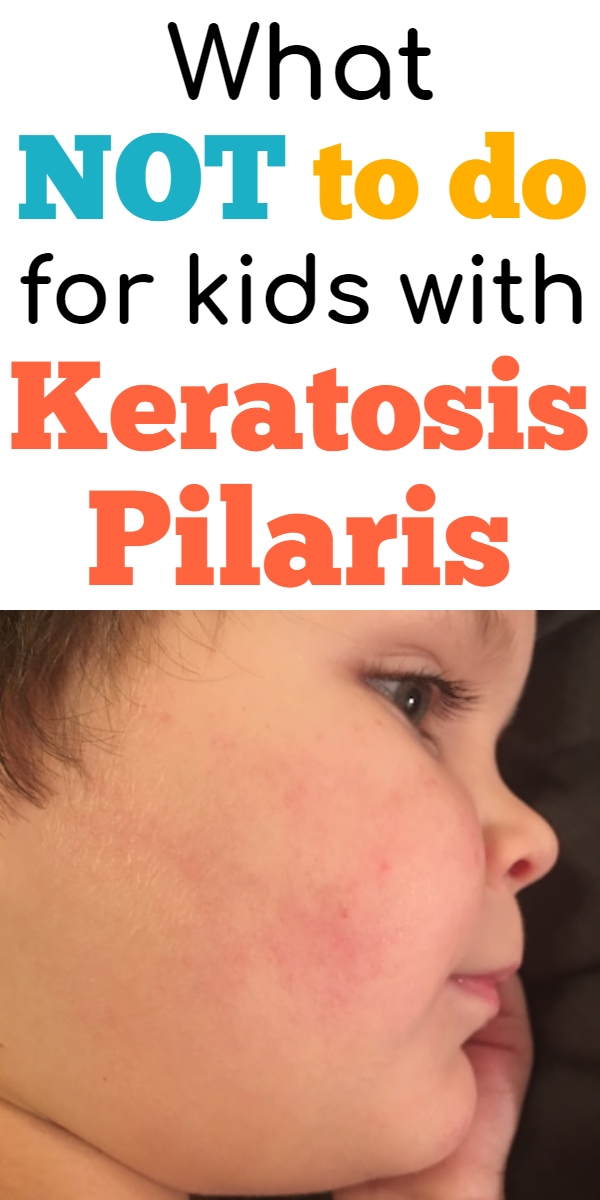
This post may contain affiliate links. Please see our disclosure for details.
A Few Tips: Keratosis Pilaris Treatment
Hopefully, you’ve found a cleansing and moisturizing method, or a great product that works (like our favorite household staple for KP skin, Aquaphor Baby Gentle Wash & Shampoo). If not, keep trying.
Every child’s skin can be so different.
Browsing our list of the top KP skin products purchased by parents in 2017 might be helpful too.
See what we’re using in our home to treat our family’s keratosis pilaris here: Keratosis Pilaris Products in Our Home.
And don’t forget to grab your free KP Tip Sheet with 10 Things You can do Today to Improve Your Child’s KP.
(We’re talking about keratosis pilaris tips, products and advice daily in our free Facebook group, KP Collective!)
5 Things NOT to do for Keratosis Pilaris in Babies, Toddlers, and Children
1. Do NOT scratch or pick at their skin, especially when the skin is dry.
Every day, every hour, your child’s skin loses moisture. It dries out. Dry skin becomes itchy and tight, which will exacerbate any skin conditions, like keratosis pilaris, eczema or sensitive skin.
Avoid scratching or picking at any affected areas (and remind your child not to scratch as well), or scrubbing your child’s KP skin excessively while bathing, to prevent even more moisture loss, scarring or inflammation. It’s a self-perpetuating cycle that is hard to break, but establishing a good habit of no scratching is extremely helpful. However, less skin damage is done if the scratching is done through clothing rather than to bare skin.
Some of our KP friends swear by the Konjac Sponges for Babies for very light itches and bathing. Let us know what you think in the comments below or in the KP Collective group.
Join the KP Collective, our private Facebook group, for KP tips and advice from hundreds of KP parents just like you (it’s free!).
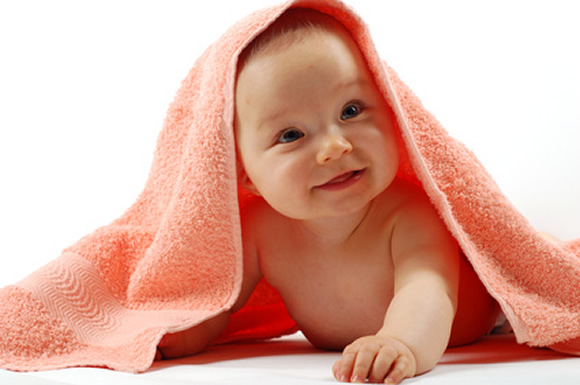
2. Do NOT skip bathing.
Many parents think that fewer baths means less moisture lost in their child’s sensitive skin, when in fact, moisture care starts with bathing.
While some experts may disagree on the ideal frequency of bathing a child with sensitive or KP skin, most will agree that baths and showers should be short in duration and a bit cooler in temperature.
RELATED: Keratosis Pilaris Products in Our Home
Tell those teenagers to make it quick, because prolonged showers can actually deplete their skin of that much-needed natural skin oil. Cleansing and scrubbing should be extremely gentle and cleansers should be as mild as possible (which is why we recommend so many organic and baby keratosis pilaris products).
When bathing a toddler or baby, keep the same thing in mind. Don’t skip baths, keep the water cooler, and don’t spend too much time in the water to avoid drying out natural moisture. When caring for baby keratosis pilaris, getting in the habit of a great bathing routine is essential.
By far, our most popular product we suggest is Aquaphor Baby Gentle Wash & Shampoo. Other awesome favorites we love are Cetaphil Baby Ultra Moisturizing Wash and California Baby Super Sensitive Shampoo & Body Wash (my kids really LOVE all the California Baby products).
RELATED: How a Humidifier can Help your Child’s Dry Skin
3. Do NOT forget to apply a moisturizer or emollient.
Moisture is key. Let me say it again, moisture is key.
When it comes to keratosis pilaris moisturizer is a must. Apply it every day, after every bath, and especially before bedtime (when it has plenty of time and warmth to soak in). The thicker the formulation of any moisturizer, or emollient, the better it will add moisture back into your child’s skin. If your child is scratching, it’s time to reapply.
Get into a moisturizing routine with your child. Diagnosing keratosis pilaris in toddlers and babies is common, so starting this routine early will help it become a normal part of their life later on.
And my best advice is to find the BEST available product to get the most out of your time and effort, which usually means ointments (like Aquaphor) work better than creams, creams (like Eucerin) work better than lotions. The thicker, the better, is a good rule to remember for KP skin and keep fragrances to a minimum.
For teens who don’t want to use baby keratosis pilaris products, we suggest Amlactin Hydrating Body Cream or Dermadoctor KP Duty. And I keep these little guys tucked everywhere. Tell us what’s working best for your family in the KP Collective group.
CLICK HERE FOR YOUR FREE KERATOSIS PILARIS TIP SHEET:
Learn 10 things you can do in the next 24 hours to improve your child’s keratosis pilaris.

4. Do NOT forget to use sunscreen.
I repeat… do NOT forget sunscreen. Sun exposure can be HARD on the healthiest of skin. Be sure that your child’s sensitive skin is protected with sunscreen for kids and apply it often. You don’t necessarily need a specific keratosis pilaris sunscreen as long as you’re protecting your child’s skin from those harmful rays.
Regardless of the season, the sun’s rays can cause excessive dry skin and sunburn. This is really important when trying to treat keratosis pilaris on face, arms, and legs. Read ingredients and choose a gentle sunscreen for face and a great sunscreen for body that will moisturize and protect their skin (like Alba Botanica.)
RELATED: The Top Keratosis Pilaris Products Purchased by Parents in 2017
Carefully apply and reapply sunscreen to concentrated areas of keratosis pilaris in toddlers and babies during extended time in the sun. Use hats and rash guards for extra protection.
Remind teenagers to reapply sunscreen often, because many teens love to sunbathe and build their tan. Sunscreen is a great skin protectant and moisturizer, so remind them to use it daily. Because what does red, sunburned skin make them want to do? Scratch! And that’s no good (see tip #1).
For babies and young children, we suggest Thinkbaby Safe Sunscreen 50+ and Alba Botanica Very Emollient Kids Sunscreen (it’s rich!).
RELATED: Recommended Products for Teens with Keratosis Pilaris
5. Do NOT be embarrassed to speak with your child’s pediatrician or dermatologist.
If your child has irritated KP skin patches or areas of concern, do NOT be embarrassed to ask your doctor what they recommend. Keratosis pilaris in babies, toddlers, and children is more common than you think. Doctors will be able to help point you in the right direction.
Most often, extra moisturization is step one, then possible medicated creams as step two.
Depending on your child’s age, scrubs or oral medications may be recommended if their case is severe. Your child’s pediatrician may refer you to a pediatric dermatologist for a consultation or a more in-depth treatment plan.
Most importantly, don’t be afraid to ASK QUESTIONS about how long a treatment should be used to see results. The more you know, the better you can help your child maintain healthy skin. Then come share what you’ve learned with other parents in our private Facebook group, KP Collective.
WHAT WE USE: Keratosis Pilaris Products in Our Home

For more tips on the best keratosis pilaris treatment for your child, follow us on Pinterest.
Tell us what you try NOT to do with your kid’s KP skin below in the comments. We always love to hear from you!
RELATED: What Your Answers to our Skin Care Questionnaire have Taught Us
Click below to get your FREE KP Tip Sheet with 10 Ways to Improve Your Kid’s Keratosis Pilaris today.
Treating Keratosis Pilaris in Babies: 0 – 24 months
Our babies have our hearts and we certainly don’t want to see them uncomfortable from the symptoms of keratosis pilaris. While many children may not show symptoms of keratosis pilaris until 2 years of age, some kids show sign of KP as early as infancy.
 Dry or irritated skin can be very uncomfortable for our tiniest family members who can’t yet tell us what may be bothering them. By far, the #1 most talked-about product here at KPKids is Aquaphor Baby Gentle Wash & Tear-Free Shampoo. It’s a very mild, fragrance-free cleanser ideal for your baby’s skin.
Dry or irritated skin can be very uncomfortable for our tiniest family members who can’t yet tell us what may be bothering them. By far, the #1 most talked-about product here at KPKids is Aquaphor Baby Gentle Wash & Tear-Free Shampoo. It’s a very mild, fragrance-free cleanser ideal for your baby’s skin.
In general, ALL of the Aquaphor Baby products are highly-recommended because they’re mild enough for cleaning your infant’s tender skin and they’re extra moisturizing.
TIP: We keep these little guys stashed everywhere.
We’ve tested many products through the years, and have come across our favorites through trial and error. These are some of our favorite brands with sensitive skin care products ideal for treating keratosis pilaris, eczema and dry skin in babies and infants…
| Aquaphor Baby | Dr. Bronner’s Baby | Mustela |
To learn more about KP and caring for your child’s skin, be sure to
subscribe to our KP Community today!
Recommended Products for Teens with Keratosis Pilaris
Our busy teenagers become more independent from year to year, and teaching them how to manage the health of their skin on their own becomes very important during these years. With hormonal changes, diet variations and sports activities, your teen with keratosis pilaris may find that their KP will flare up or make them self-conscious about their skin.
So how do you teach teens the basics of good skin care at this age? Show them the steps help them establish a solid skin care routine, and remind them often. Show them the best products and tools to use and how to use them effectively to look and feel their best.
RELATED: The Top Keratosis Pilaris Products Purchased by Parents in 2017
The teenage years are often filled with increasing body awareness, self-reflection and self-doubt. By enabling our teens to care for their sensitive skin, we can help them become more confident in their appearance during these self-conscious years. The more our teenagers can do for themselves, and the more they know about taking good care of their sensitive skin, the more independent and confident they feel about their skin and bodies.

Recommended Products for Teens with Keratosis Pilaris
We’ve tested many products for keratosis pilaris through the years, and have discussed many of them in our Facebook group, the KP Collective (come join for free!). We have come across a few favorites, through trial and error, that may help your teenager care for their keratosis pilaris.
These are some of our favorite brands for treating keratosis pilaris, eczema and dry skin in teens…
Top 5 Gentle Skin Scrubs & Exfoliators for Teens with Keratosis Pilaris
- Konjac Bath Sponges – For Face & Body (small but effective, great to keep in every shower in the house)
- Billy Jealousy LiquidSand Gentle Exfoliating Facial Cleanser (super gentle, love this one!)
- Clarisonic Mia 2 Sonic Facial Cleansing Brush (a must-have in every teenager’s bathroom)
- Buf-Puf Reusable Facial Sponge, Extra Gentle (great for a quick face wash and perfect for travel bags)
- KP Elements Body Scrub – Keratosis Pilaris Treatment (an effective chemical exfoliant and scrub in one)
KPKids Favorite: Billy Jealousy LiquidSand Gentle Exfoliating Facial Cleanser
Top 5 Hydrating Skin Lotions & Creams for Teens with Keratosis Pilaris
- CeraVe SA Renewing Skin Lotion (our hands-down favorite)
- AmLactin Alpha-Hydroxy Therapy Moisturizing Body Lotion for Dry Skin (gentle enough for every day)
- Eucerin Intensive Repair Very Dry Skin Lotion (great for all-over body moisturizing before bedtime)
- Lilah James Natural Rejuvenating KP Cream (recently popular and feels great)
- DERMAdoctor KP Duty AHA Moisturizing Therapy for Dry Skin (well-known KP brand for years)
KPKids Favorite: CeraVe SA Renewing Skin Lotion
RELATED: How a Humidifier can Help your Child’s Dry Skin
We want to hear from you!
Come visit our private Facebook group, the KP Collective, and tell us what’s working for you and your family as you treat your child’s keratosis pilaris. Connect with hundreds of other parents from across the globe, share ideas and get tips for caring for you child’s keratosis pilaris. Together, we’ll find something that WORKS.
CLICK HERE FOR YOUR FREE KERATOSIS PILARIS TIP SHEET:
Learn 10 things you can do in the next 24 hours to improve your child’s keratosis pilaris.
Common Skin Care Ingredients & How They Help Your Kid’s Keratosis Pilaris
There are a LOT of skin care products on the market, each with different elements designed to treat or improve your skin.
To fully understand today’s skin care products, you must learn what the main ingredients are and how they improve the skin. But how do you know which ingredients to look for, and which to avoid?
The list below will explain the function of many common ingredients in skin care products today to help you be an informed consumer.
NOTE: If you are unsure which skin care products are right for your child, ask your pediatrician or dermatologist for recommendations. Ingredient sources cited below.
ALCOHOL (SD ALCOHOL): Undrinkable ethyl alcohol has many uses in skin care. It delivers other ingredients into the skin and drives them deeper down. In toners and acne products, it can help dissolve oil and temporarily tighten pores. When added to certain moisturizers, like gel-based lotions, it makes them less tacky and helps them dry faster on the face.
ALPHA-HYDROXY ACID (AHA): Over-the-counter skin care products containing alpha-hydroxy acids (glycolic, lactic, tartaric, and citric acids) have become increasingly popular in recent years. These chemicals loosen the fluid that binds surface skin cells together, allowing dead ones to be whisked away. To allow your skin to get used to powerful alpha-hydroxy acids, you should only initially apply the skin care product every other day, gradually working up to daily application.
ASCORBIC ACID: This topical form of antioxidant vitamin C brightens the skin, increases collagen production, and stems free-radical damage, making it a popular anti-aging ingredient.
AVOBENZONE: A common chemical found in sunscreens, it absorbs UVA rays to reduce their penetration into the skin, but does not protect against UVB rays.
BENZOYL PEROXIDE: An acne medicine that kills pimple-causing bacteria and exfoliates pores. It can be found in concentrations up to 10 percent in over-the-counter products, like Oxy and Clean & Clear.
KPKids Favorite: ProActiv 3-Step Acne Treatment System
BETA HYDROXY ACID (BHA): These chemical exfoliants can smooth fine lines, even pigmentation, and penetrate deeply into pores, dissolving sticky plugs of sebum and dead skin. One of the most common BHAs, salicylic acid, is found in many acne washes, creams, and peels.
CITRIC ACID: Found in many fruits, citric acid is an antioxidant alpha hydroxy acid that acts as a natural preservative. When used in peels, masks, and washes, it brightens and exfoliates the upper layers of the skin, encouraging new collagen formation.
RELATED: How a Humidifier can Help your Child’s Dry Skin
DIMETHICONE: A slippery form of silicone that hydrates and protects the skin; often found in oil-free moisturizers.
EMOLLIENT: Any moisturizing ingredient that increases water levels in the epidermis, another word for moisturizer. Used to correct dryness and scaling of the skin by increasing hydration, preventing moisture loss, or both. The effects of moisturizers are temporary, but over time and used consistently, they make a significant difference in the appearance of skin.
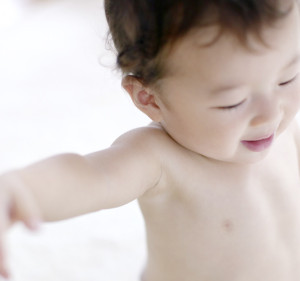
GLYCERIN: Glycerin is a humectant, meaning it pulls moisture from the atmosphere to hydrate skin. Commonly used in moisturizers and hydrating cleansers, glycerin is a humectant naturally found in skin that helps it maintain a soft, moisturized, healthy look. Used topically in combination with other emollients and antioxidants, it has been shown to be very effective at restoring the skin.
RELATED: Keratosis Pilaris Products We Use in Our Home
GLYCOLIC ACID: An alpha hydroxy acid derived from sugarcane, it dissolves the gluelike substance between skin cells, aiding in exfoliation and improving skin texture. It’s commonly used in high-end anti-aging products, such as cleansers, creams, and peels.
HELIOPLEX: Helioplex is the trademarked name of a sunscreen technology that combines avobenzone with a stabilizing ingredient called oxybenzone to offer protection from both UVA and UVB sunlight.
KPKids Favorites: Neutrogena Clear Face Liquid Lotion Sunscreen SPF 55 & Neutrogena Beach Defense Spray Sunscreen SPF 70
HUMECTANT: This class of moisturizing ingredients pulls water from the atmosphere into the top layer of the skin.
HYALURONIC ACID (HA): Hyaluronic acid is a common ingredient in skin care products. Hyaluronic acid plays a critical role in skin health with its unique ability to hold in moisture (1000 ml of water per gram of hyaluronic acid). Naturally found in the body, hyaluronic acid secures skin moisture, creating a youthful fullness to the skin. In skin care products, you can find hyaluronic acid creams, serums, injectables (aka: Restylane), and hyaluronic acid supplements.
KPKids Favorites: Peter Thomas Roth Water Drench Hyaluronic Cloud Cream & CeraVe Sunscreen Stick SPF 50 with Zinc Oxide & Hyaluronic Acid
JOJOBA OIL: Similar in structure to skin’s natural oil, jojoba oil penetrates the skin to hydrate without clogging pores. Jojoba oil has become a popular product among KP parents in 2017.
KPKids Favorites: Cliganic Organic Jojoba Oil for Hair & Face
LACTIC ACID: Derived from fermented milk, this alpha hydroxy acid exfoliates dead skin cells and is gentle enough for people with sensitive skin or rosacea. Since it’s part of our body’s natural moisturizing factor, it’s especially compatible with human skin.
MICRODERMABRASION: Performed by dermatologists and facialists, this treatment exfoliates the top layer of dead skin cells with a wand that sprays on and then vacuums off extremely fine aluminum-oxide crystals. A newer form of the technology uses a vibrating diamond tip in place of the crystals.
KPKids Favorites: dr. brandt Microdermabrasion Skin Exfoliant & Neutrogena Microdermabrasion Starter Kit
MINERAL OIL: A colorless, odorless distillation byproduct of petroleum often found in moisturizer for its ability to soothe skin and help it hang onto moisture. Mineral oil can be pore-clogging for some, but it isn’t shown to be as harmful as some believe.
RELATED: Top Product Picks for Coconut Oil
OMEGA-3 FATTY ACIDS: Abundant in herring, mackerel, wild salmon, walnuts, flaxseed, and olive oil, these essential omega-3 fatty acids maintain the function of cell membranes throughout the body, preserving cells’ ability to take in nutrients, dispose of waste, and hold onto water. In the epidermis, this can translate to smoother, more supple, hydrated skin.
KPKids Favorites: SmartyPants Kids Complete Multivitamin with Omega 3 & OLLY Kids Multivitamin and Omega 3 Supplement
OXYBENZONE: Also known as benzophenone-3, this chemical sunscreen absorbs mainly UVB rays, which is why it is typically combined with UVA-absorbing filters (like avobenzone) to create broad-spectrum sunscreens.
PARABENS: A class of preservatives used to protect cosmetics against the growth of bacteria and fungi. These controversial ingredients—including methylparaben, propylparaben, and butylparaben—have been shown to possess mild estrogen-like properties, but the FDA deems them safe when used at very low levels (.01 to .3 percent) in cosmetics.
SALICYLIC ACID (SA): Salicylic acid is a powerful beta-hydroxy acid that removes excess oil and dead cells from the skin’s surface. It’s used in nonprescription cleansers, moisturizers, and treatments as an exfoliator when treating skin conditions such as acne, keratosis pilaris, psoriasis and seborrheic dermatitis. Salicylic acid acts as a keratolytic, which loosens keratin (a protein that forms the structure of skin), therefore allowing thickened, scaly plaques of skin to shed more easily.
Using an exfoliator that contains salicylic acid not only sloughs off dead skin like a traditional face scrub, but it also contains mild acids that will decrease inflammation and prevent further breakouts. People with oily and acne-prone skin benefit from salicylic acid peels because they loosen blackheads, reduce oil and even discoloration from old breakouts. Salicylic acid should also not be used in children younger than age two, as the absorption rate through skin is greater.
KPKids Favorites: CeraVe Renewing SA Cream for Rough & Bumpy Skin (seriously good) & CeraVe Renewing SA Cleanser with Salicylic Acid
PETROLATUM: A purified by-product of petroleum, this thick, odorless, and colorless substance coats the skin to hydrate and prevent water loss. Petrolatum is used in standard (i.e., not oil-free) moisturizers. It can potentially clog pores and cause acne in those who are prone.
RETIN-A: The brand name for the prescription vitamin A derivative, tretinoin (a stronger version of retinol). First approved by the FDA for the treatment of acne, Retin-A was eventually found to fight signs of aging by speeding up exfoliation, repairing skin on a molecular level, and boosting new collagen production. Retin-A users are encouraged to use extra sunscreen and avoid full sun exposure.
RETINOIDS: This is the catchall phrase used to describe all vitamin A derivatives used in skin care.
RETINOL: A derivative of vitamin A used in anti-aging products to stimulate the turnover of skin cells and increase collagen production. The maximum amount allowed in over-the-counter products is 1 percent. Retinyl palmitate and retinaldehyde are weaker, less-irritating forms of retinol. Retinol is proven to improve mottled pigmentation, fine lines and wrinkles, skin texture, skin tone and color, and your skin’s hydration levels.
SHEA BUTTER: Shea butter is an excellent moisturizer. However, the vitamin concentrations found in most commercial shea butter preparations are negligible. Most formulations will vary from 5% shea butter in body washes to 25% shea butter in heavy creams.
KPKids Favorites: L’Occitane Fast-Absorbing 20% Shea Butter Hand Cream & L’Occitane Extra Gentle 5% Shea Butter Hand & Body Lotion
TITANIUM OXIDE: An earth mineral used in natural sunscreen, as it protects skin from UVA and UVB radiation with no risk of sensitivity. The ingredient is recommended for irritative, redness-prone skin.
VITAMIN C (L-ASCORBIC ACID): An antioxidant that boosts collagen production and inhibits pigment formation. Like many antioxidants, it’s an unstable molecule that can break down quickly when exposed to light and air. Common derivatives, like ascorbyl palmitate and tetrahexyldecyl ascorbate, tend to be more stable than pure ascorbic acid but slower acting.
This is the only form of vitamin C that you should look for in your skin care products. There are many skin care products on the market today that boast vitamin C derivatives as an ingredient (magnesium ascorbyl phosphate or ascorbyl palmitate, for example), but L-ascorbic acid is the only useful form of vitamin C in skin care products. With age and sun exposure, collagen synthesis in the skin decreases, leading to wrinkles. Vitamin C is the only antioxidant proven to stimulate the synthesis of collagen, minimizing fine lines, scars, and wrinkles.
VITAMIN E: An antioxidant used to prevent free radical damage which protects the skin from the sun damage. Its main effect in serums/creams is to stabilize and augment the antioxidant activity of Vitamin C.
ZINC OXIDE: A mineral in sunscreen that prevents UVA and UVB light from entering skin and doing damage.
SOURCES:
- https://www.huffingtonpost.com/2014/10/03/salicylic-acid-skincare_n_5919712.html
- https://www.allure.com/story/skin-care-terms-glossary-definitions
- https://my.clevelandclinic.org/health/articles/10980-understanding-the-ingredients-in-skin-care-products
- https://www.skintour.com/skin-care-product-articles/skin-care-ingredients-and-terms/
- http://www.byrdie.com/skincare-ingredients-glossary/slide4
